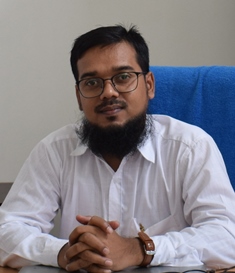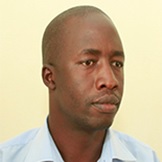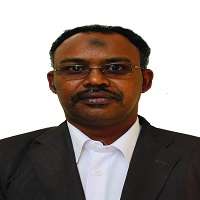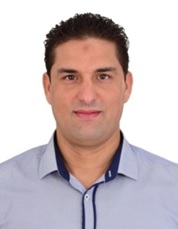ABSTRACT
Introduction: Riedel's thyroiditis (RT) is a rare disease characterized by destructive inflammatory fibrosis of the thyroid gland. It is often part of a systemic disease, idiopathic multifocal fibrosclerosis, which can affect other sites such as the retroperitoneum. We report two cases of RT revealed by retroperitoneal fibrosis (RPF), emphasizing the contribution of biological investigations to the diagnosis and management. Case Reports: Case 1: A 36-year-old female, with no significant medical history, presented with bilateral renal colic and a hard goiter. Laboratory findings revealed renal insufficiency and a normal thyroid panel. Imaging (ultrasound, CT urogram) confirmed RPF. Lymph node and thyroid biopsies confirmed the fibro-inflammatory process. Case 2: A 72-year-old female, with a history of hypertension and diabetes, presented with a long-standing stony goiter. A routine blood test revealed renal insufficiency. Imaging highlighted RPF. Histology after total thyroidectomy confirmed RT. Discussion: Biological investigations play a crucial role at several levels: 1) Screening for systemic involvement (renal failure), 2) Assessment of thyroid status (often normal initially), 3) Search for inflammatory evidence (biological inflammatory syndrome, often present), and 4) Therapeutic monitoring under corticosteroids. The absence of specific autoantibodies makes histology essential for diagnosis. Conclusion: RT is a rare cause of RPF. Although non-specific, biological workup is a key element for diagnosing systemic extension and for follow-up. It must systematically include renal, thyroid, and inflammatory assessments in any suspected case of RT.
Original Research Article
ABSTRACT
This study explored the transformative role of biomass gasification integrated within Multifunctional Platforms (MFPs) as a sustainable solution to rural energy poverty and agro-industrial stagnation in off-grid areas of Uganda. Anchored within the framework of the Parish Development Model (PDM), the research investigated how advanced biomass gasification technologies stimulated agro-processing, promoted environmental conservation, and drove inclusive economic development at the grassroots. The study was conducted in Kibale District, employing a mixed-methods approach that involved surveys, focus group discussions, and key informant interviews with local farmers, agro-processors, community leaders, and technical experts. Findings revealed that biomass gasification offered a reliable and renewable energy source, especially when harnessed through MFPs to power agro-processing units, support rural enterprises, and reduce post-harvest losses. The technology also contributed to waste management by converting agricultural residues into clean energy, thereby enhancing environmental sustainability. However, adoption was hindered by factors such as limited technical knowledge, inadequate financing mechanisms, and infrastructural gaps. The research underscored the critical need for capacity building, public-private partnerships, and tailored policy interventions to mainstream biomass gasification within the PDM framework. By leveraging locally available biomass resources, Uganda could unlock rural industrial potential, improve livelihoods, and advance its transition to a low-carbon print economy. The study concluded with strategic recommendations to scale up MFPs as engines for sustainable rural transformation and resilient agro-industrial ecosystems in off-grid communities.
Original Research Article
Computed Tomographic Findings of the Ethmoid roof by Keros classification in patients attending a Tertiary Hospital in Dar es salaam, Tanzania
Lunyonga R. Shija, Enica R. Masawe, Martin Elimath, Eveline Kahinga, Timon Theophil, Brian J. Kimario, Idd S. Semindu, Frank N. kagiye, Omary I. Mhochi
East African Scholars J Med Surg; 2025; 7(10): 302-310
https://doi.org/10.36349/easjms.2025.v07i10.003
Abstract
PDF
FULL TEXT
E-PUB
331 Downloads | Oct. 7, 2025
ABSTRACT
Background: The variations of the olfactory fossa/ethmoid roof are common. These variations are important to be acknowledged when dealing with endoscopic sinonasal and skull base surgeries due to possibilities of injuries to the vital structures. The depth of the olfactory fossa is classified as Keros type I, II, or III (Depth 1-3mm, 4-7mm, and 8-16mm, respectively). Keros type III is consider the most venerable type to iatrogenic injury followed by type II. The variations can be similar or dissimilar among countries, geographies, and ethnicities. Functional endoscopic sinus surgery (FESS) is currently the preferred surgical option worldwide when dealing with nasal or sinonasal diseases. Awareness of the anatomical landmarks, Variations in the depth of the olfactory fossa, assist the surgeon in avoiding CSF leaking, brain herniation, and hemorrhage. For a few decades, it was introduced in Africa (Egypt, Nigeria, South Africa, Kenya, etc.). FESS was introduced at the Muhimbili National Hospital, Tanzania in 2010 and is currently becoming widely practiced in the country. Only a single study done in Kenya on anatomical variations of the ethmoid roof was found in east Africa. No data was found in Tanzania and due to the scarcity of data in Africa especially in east Africa, this study was necessary.
ABSTRACT
Congenitally corrected transposition of the great arteries (CCTGA), is a complex and extremely rare congenital heart defect characterized by atrioventricular and ventriculoarterial discordance due to abnormal ventricular positioning. Isolated forms may remain asymptomatic for years, unlike cases associated with other cardiac anomalies. We report the case of an 18-year-old patient with no known medical history, in whom a first-degree atrioventricular block was incidentally detected during routine evaluation. Echocardiography performed revealed double discordance. Given the absence of symptoms, a conservative approach with regular clinical, ECG, and echocardiographic monitoring was adopted.
ABSTRACT
Background: Caesarean section is one of the most common surgical procedures and it can be complicated by postpartum haemorrhage, requiring additional suturing. Retained surgical needles during Caesarean section (CS) are rare but serious complications, and are particularly challenging in low-resource settings. We present a case managed in a remote hospital in Lamu County, Kenya without access to advanced imaging or specialist input at the time of surgery. Case Presentation: A 26-year-old patient underwent emergency CS at 38 weeks for failure to progress. Postpartum haemorrhage from the placental bed in the posterior uterine wall happened and required suturing. Unfortunately, the needle became detached and was lost within the myometrium. The needle could not be retrieved intraoperatively because of continuing bleeding, leading to poor visibility and the need to close the uterus. Therefore, the decision was made to leave it in situ for later retrieval. Further evaluation and discussion with a multidisciplinary team were conducted. Surgical removal was performed because of the potential risks. No advanced imaging including CT or fluoroscopy was available, and ultrasound scanning was successfully used to localize the needle preoperatively and also guide the retrieval intraoperatively, through a posterior uterine wall incision. The patient's recovery was uneventful and she was discharged on the third postoperative day. Conclusion: This case illustrates the feasibility and effectiveness of using ultrasound to manage a retained uterine needle in a low-resource setting. Real-time ultrasound is safe, minimally invasive, and available, and helps avoid complications. Early communication with the patient and multidisciplinary teamwork were key to successful outcomes.













